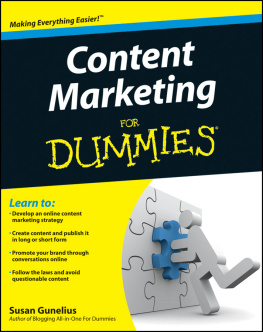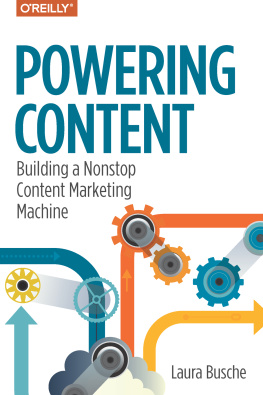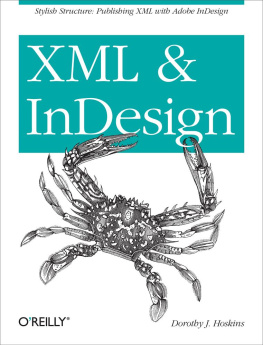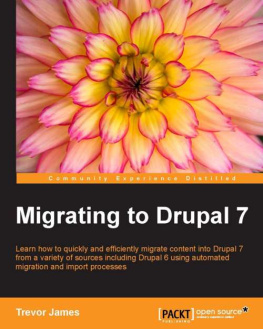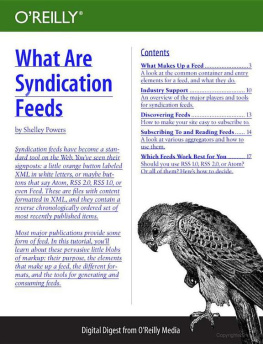Wittenbrink - RSS and Atom: understanding and implementing content feeds and syndication ; [covers RSS 2.0, RSS 1.1, RSS 1.0, RSS 0.9x, Atom 1.0, and all important extensions to these formats]
Here you can read online Wittenbrink - RSS and Atom: understanding and implementing content feeds and syndication ; [covers RSS 2.0, RSS 1.1, RSS 1.0, RSS 0.9x, Atom 1.0, and all important extensions to these formats] full text of the book (entire story) in english for free. Download pdf and epub, get meaning, cover and reviews about this ebook. City: Birmingham, year: 2005, publisher: Packt Publishing, genre: Computer. Description of the work, (preface) as well as reviews are available. Best literature library LitArk.com created for fans of good reading and offers a wide selection of genres:
Romance novel
Science fiction
Adventure
Detective
Science
History
Home and family
Prose
Art
Politics
Computer
Non-fiction
Religion
Business
Children
Humor
Choose a favorite category and find really read worthwhile books. Enjoy immersion in the world of imagination, feel the emotions of the characters or learn something new for yourself, make an fascinating discovery.
- Book:RSS and Atom: understanding and implementing content feeds and syndication ; [covers RSS 2.0, RSS 1.1, RSS 1.0, RSS 0.9x, Atom 1.0, and all important extensions to these formats]
- Author:
- Publisher:Packt Publishing
- Genre:
- Year:2005
- City:Birmingham
- Rating:4 / 5
- Favourites:Add to favourites
- Your mark:
RSS and Atom: understanding and implementing content feeds and syndication ; [covers RSS 2.0, RSS 1.1, RSS 1.0, RSS 0.9x, Atom 1.0, and all important extensions to these formats]: summary, description and annotation
We offer to read an annotation, description, summary or preface (depends on what the author of the book "RSS and Atom: understanding and implementing content feeds and syndication ; [covers RSS 2.0, RSS 1.1, RSS 1.0, RSS 0.9x, Atom 1.0, and all important extensions to these formats]" wrote himself). If you haven't found the necessary information about the book — write in the comments, we will try to find it.
The style of the book is succinct and precise. The information is densely packed but well structured, making it both readable as an introduction and overview, but also highly functional as a reference. The author is authoritative but friendly in his style, and peppers the text with interesting examples and pertinent URLs. This book has been written for content professionals, web developers and marketing teams who want to understand what RSS and content syndication is, how it works, what it can for them, and how they can get it up and running. It assumes a solid knowledge of XML and how the web works, but is not intended to be the exclusive province of the technically minded.
Wittenbrink: author's other books
Who wrote RSS and Atom: understanding and implementing content feeds and syndication ; [covers RSS 2.0, RSS 1.1, RSS 1.0, RSS 0.9x, Atom 1.0, and all important extensions to these formats]? Find out the surname, the name of the author of the book and a list of all author's works by series.

![Wittenbrink RSS and Atom: understanding and implementing content feeds and syndication ; [covers RSS 2.0, RSS 1.1, RSS 1.0, RSS 0.9x, Atom 1.0, and all important extensions to these formats]](/uploads/posts/book/209899/thumbs/wittenbrink-rss-and-atom-understanding-and.jpg)
